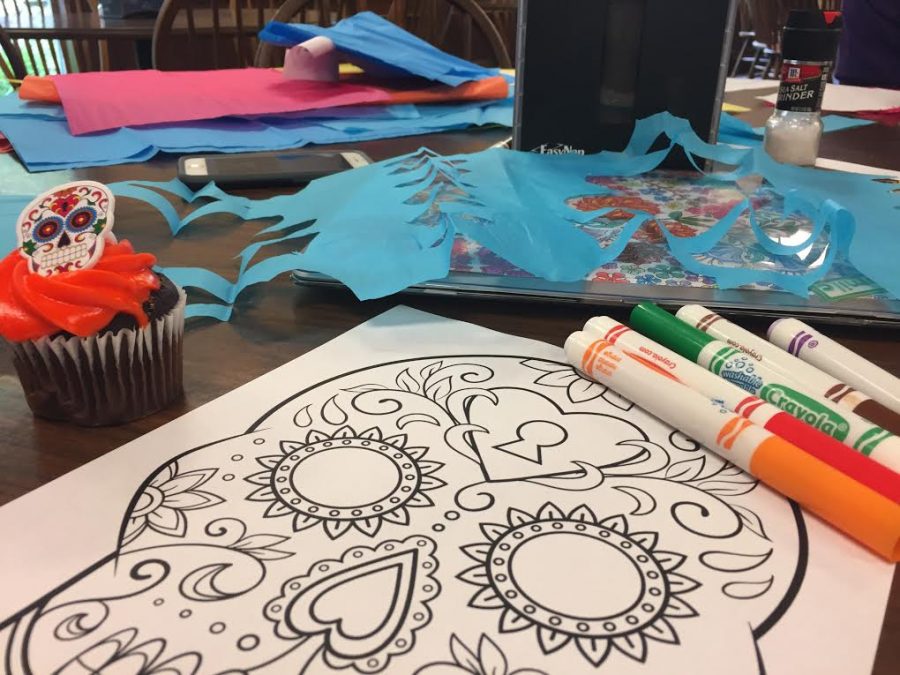Día de los Muertos: Unmasked
Day of the Dead, also known as Día de los Muertos, is a holiday celebrated throughout Mexico and parts of America. It officially started on Nov. 1 and ended Nov. 2. The two day celebration celebrates the lives of loved ones who have passed.
The Spanish club hosts a celebration each year.
“Today we are celebrating Day of the Dead, and are watching a video on Día de los Muertos, we’re making papel picado, also coloring and eating some cupcakes with the skulls ‘calaveras’ on them,” Spanish teacher Reid Owens said.
Papel Picado is a thin sheet of paper cut into different shapes, and is one of the many traditional decorations of Día de los Muertos.
“It is tissue paper that is cut out, typically in the form of a skull, or crossbones to commemorate the dead. In Mexico they hang it on an altar to beautify the area,” Owens said.
Santiago Marquez is the only student from Mexico and has his own family traditions for Día de los Muertos.
“What we make to celebrate is buy a typical bread called “pan de muerto” and we eat it all together as a dessert, also sometimes we make a table in my house of someone [we knew]. Sometimes in school they make activities or let us go with a costume,” Marquez said.
Día de los Muertos can take over two weeks to prepare for in Mexico.
“We get prepared buying some things because the main tradition is to make a table in honor to the person that died,” Marquez said. “You buy the favorite things of the person you are going to remember in el Día de Muertos. For example you can buy his favorite food, a ball of his favorite sport, his favorite celebrity and in the middle of the table we have a picture in honor to the person that died.”
However Día de los Muertos isn’t only a celebration it is a time of reflecting on the lives of loved ones who have passed.
“We celebrate it in honor of the people that you know that died and to show people their traditions and their favorite things to eat and do, it’s most a tradition for México instead of celebrate Halloween like in more places,” Marquez said.
Some consider Día de los Muertos to be similar to Halloween, however that is not the case.
“The biggest difference is that on Halloween there’s more of a fear and really the Day of the Dead is about life and death being a part of life. Death gives value to life and it’s not something to fear, but something to celebrate, ” Owens said.

